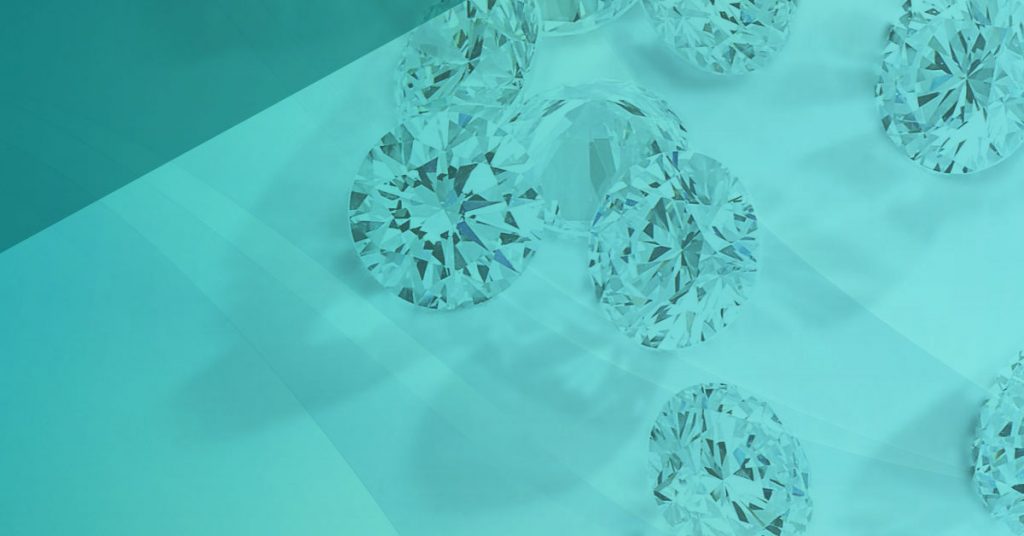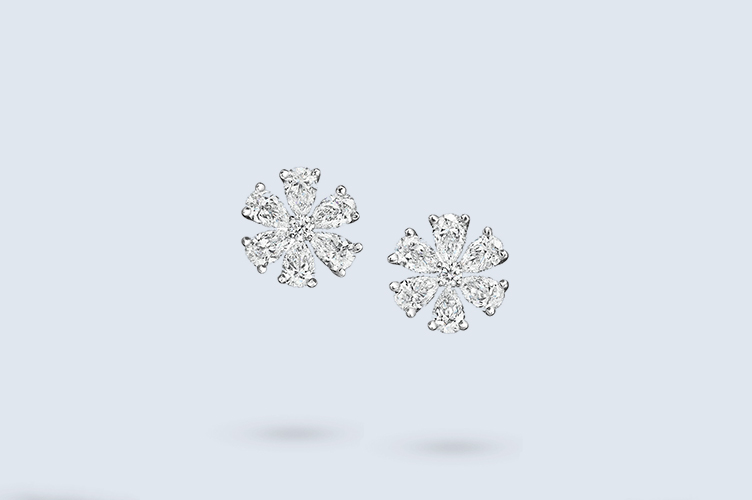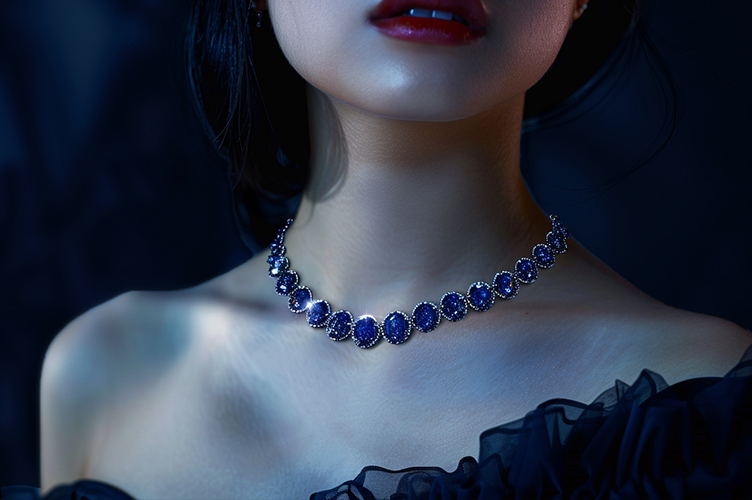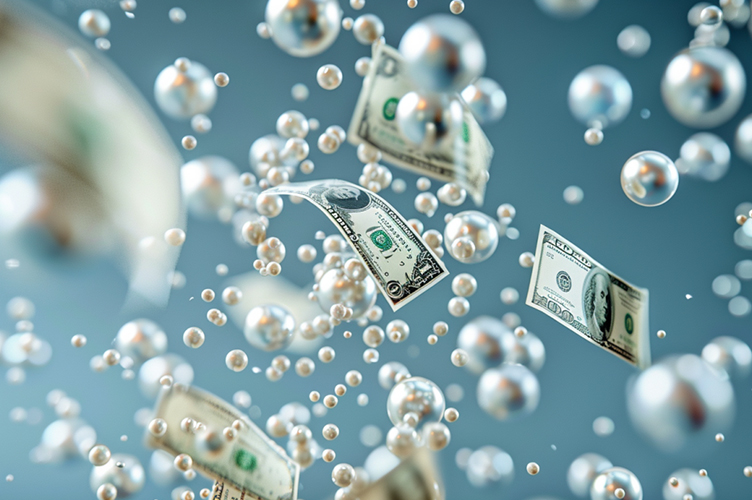You may have heard that the 4Cs of diamonds – carat, color, clarity, and cut – are the ABCs of diamond shopping, but has anyone ever told you how much each of these factors affects the price? Let’s explore each of these characteristics to understand how they affect a diamond’s appearance and value.
How BriteCo uses diamond variables
BriteCo offers a free, web-based appraisal system for jewelers. One of the most powerful features of the system is that it automatically calculates a suggested value for a piece of jewelry or watch, based on current data.
When it comes to diamonds, we use over half a million data points to build our price models. They get updated regularly to keep our values current with what’s happening in the market. Our models help us understand how various factors, including the 4Cs, affect the value of a diamond.
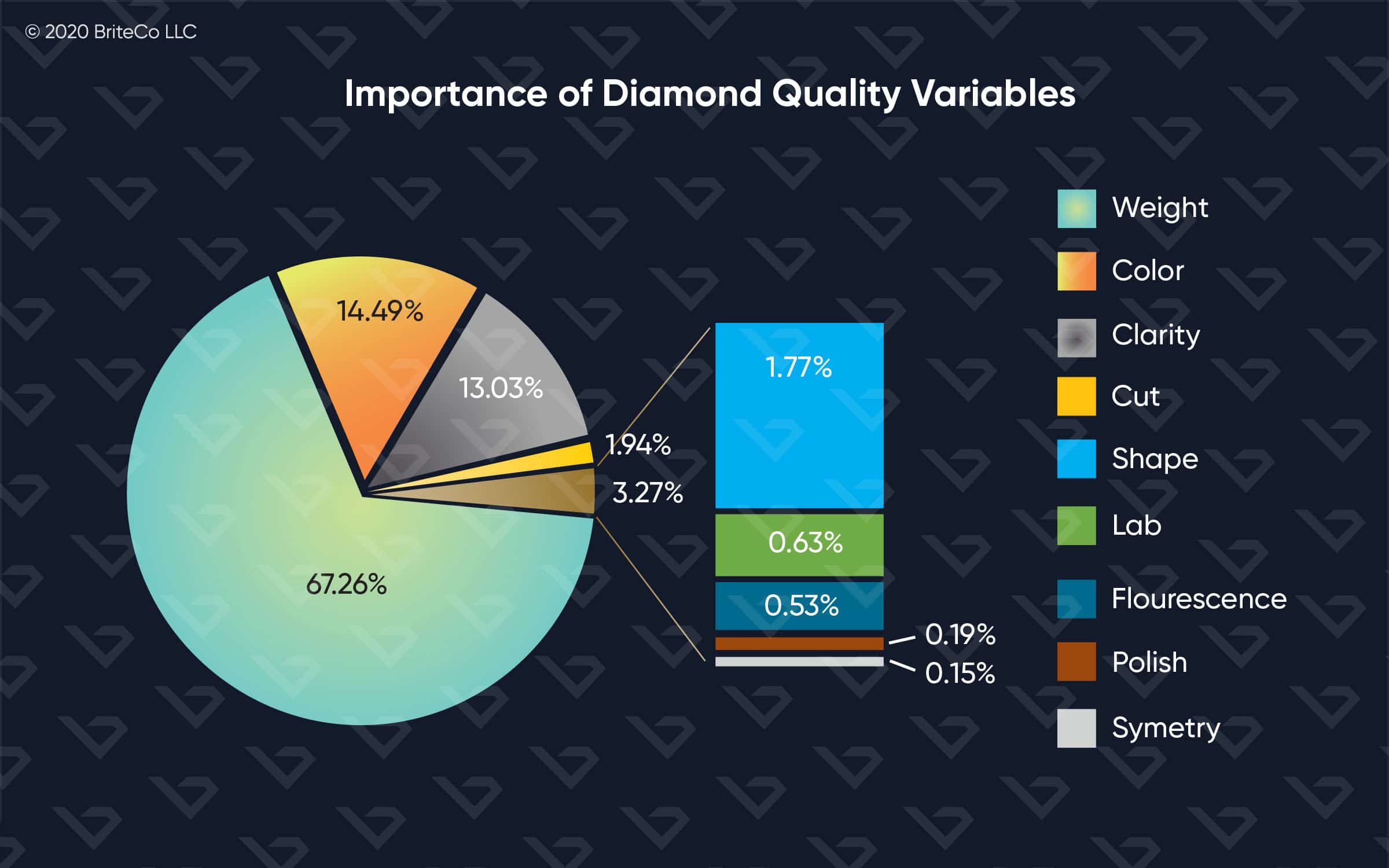
This Importance of Diamond Variables graph compares the variables against each other to show you how they rank when it comes to assessing price.
What does this graph tell us? The higher the percentage in the graph, which represents variable importance, the more price fluctuation you’ll see at the ends of the spectrum. Since weight (carat), color, and cut are the highest, you’ll see the biggest fluctuations in diamond price as those variables change.
In this post, we’ll break down each of the 4Cs to show you how it affects the quality and price of a diamond.
4Cs dominate price
Carat (Weight)
When it comes to diamonds and other gemstones, what does the carat tell you? It’s how much the diamond weighs and how big it looks. A carat is technically a fifth of a gram. That’s a little less than half the weight of a standard paperclip. Of all of the variables, the weight of the stone has the biggest impact on overall price. Why? Because diamond prices are exponential rather than linear, so as the carat weight increases, the price increases at a higher rate.
To show you what we mean, let’s look at the cost of a G/H color VS2/SI1 round brilliant diamond across the spectrum of weights.
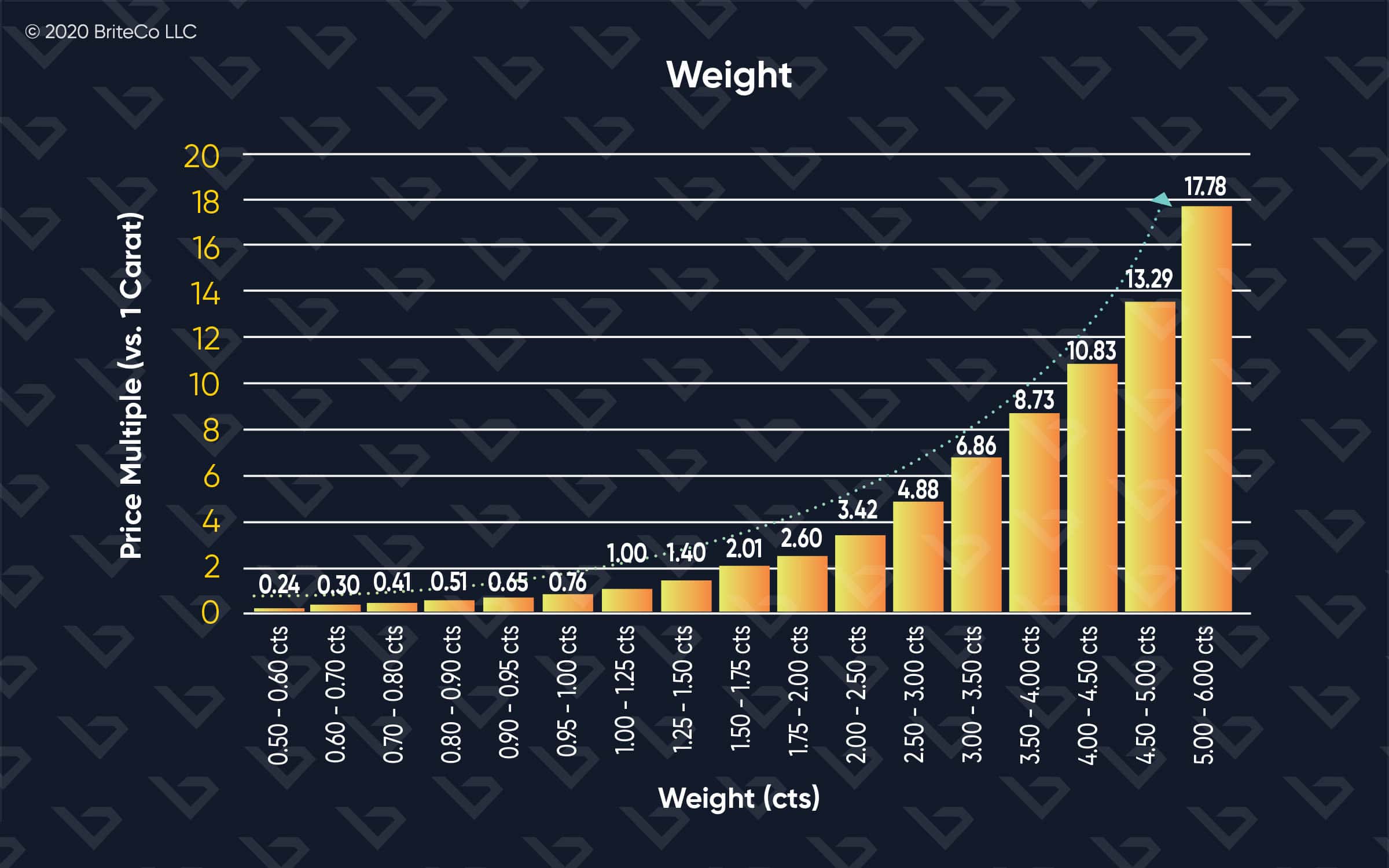
As you can see in the Weight graph, as you move above 1.0 carat, the cost increases at a higher rate. This accelerating growth accounts for the rarity of larger diamonds relative to smaller diamonds.
For example, if you’re comparing a 1.0 carat diamond to a 2.0 carat diamond, the larger diamond doesn’t cost twice as much, but rather 3.4 times as much. In the other direction, if you compare a 0.5 carat diamond to a 1.0 carat diamond, the smaller stone doesn’t cost half as much; it only costs a quarter as much as the larger stone. The larger you go, the more rare, and therefore, the more valuable.
Shopping Tips:
- For the price-sensitive shopper: The best bargains are going to be just below the cutoff points of the above categories. The stone will be negligibly smaller, but you’ll save a significant amount of money in price per carat.
- For the quality-focused shopper: As you increase carat weight, the appearance in size does not increase at the same rate. In other words, a 2.0 carat diamond will not have twice the diameter of a 1.0 carat diamond. As you increase carat weight (and therefore value), the size increases in three dimensions, so the visible increase will be smaller than you might expect.
Color
The next most important diamond variable for influencing price is a stone’s color. This ranges from D (colorless) to Z (very light). There’s actually a whole universe of color that extends beyond Z, but we’ll save that for another day. The scale is so gradual, it’s hard to notice a difference between two adjacent colors. In general, we like to think of color in groups. D to F is “colorless,” G to J is “near colorless,” and K to M is “faint.” We’ll stick to these, since these are the most commonly sold colors. Let’s explore the change in price compared with a very commonly selected color, H.

Take a look at the Color graph. Depending on which way you move from H, you’re going to see a wide variance in the pricing. As you move to the left, towards a truly colorless diamond (D), the diamond will get more expensive with each step. Moving to the right from H, as you approach diamonds with more color, you’ll get steeper discounts the farther down you go. However, once you reach very light colored diamonds, the discount tapers off.
Shopping Tips:
- For the price-sensitive shopper: An I or J stone can net you big discounts while keeping you in the near colorless category. If you have a yellow gold setting, you can venture farther into the slightly yellow territory for even more savings without sacrificing appearance.
- For the quality-focused shopper: Spending the money to get to F is worth it if you’d like to say you have a “colorless” stone.
Clarity
Clarity, the next most important price-impacting variable, refers to imperfections in the diamond. Diamonds are formed under intense heat and pressure, and in that process, they can develop birthmarks and irregularities, known as inclusions. Clarity is the subjective grading of the numbers, size, severity, and appearance of these inclusions under 10X magnification. This ranges from flawless (no inclusions) to I3 (highly included). Diamonds that are VS2 or SI1 are what’s called “eye clean.” They do not appear to have inclusions when seen with the naked eye; they’re only visible under 10x magnification. Let’s compare prices across the clarity spectrum against VS2 (eye clean) quality.
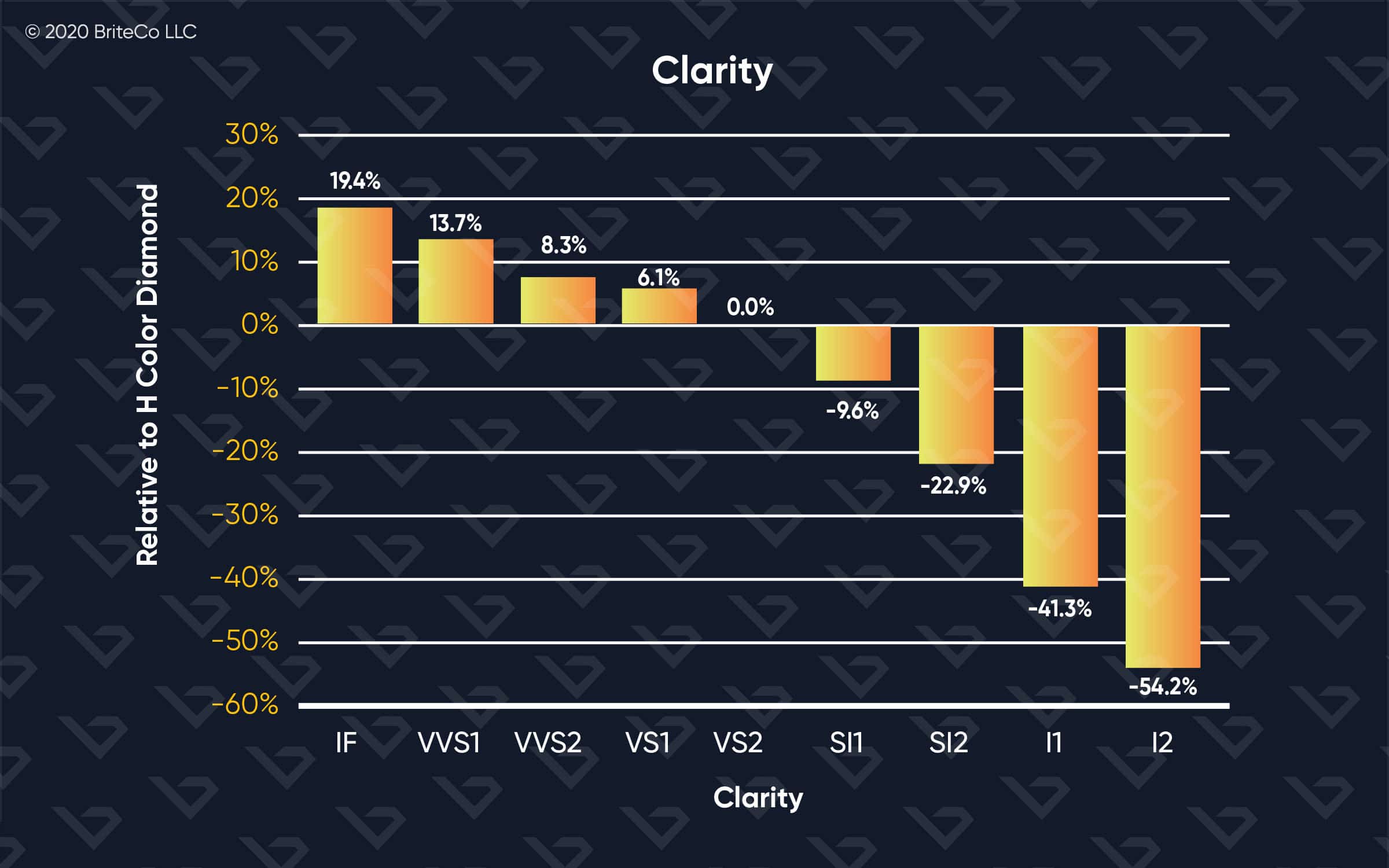
Just like we saw with color, when we look at the Clarity graph, we see smaller relative surcharges for higher quality stones, and steep discounts for lower quality diamonds. The discount is especially pronounced moving from SI2 to I1 stones, as this is where inclusions begin to impact the overall appearance of the diamond to the naked eye.
Shopping Tips:
- For the price-sensitive shopper: An SI1 or SI2 stone can fetch a nice discount without impacting the overall appearance of the stone. However, here’s an important pro tip: two diamonds may have the exact same clarity grade but look totally different, even to the naked eye. This is one of the reasons working with a local, trusted jeweler is extremely valuable. A jeweler can evaluate the inclusions and make a judgment call on appearance to make sure you end up with a beautiful stone.
- For the quality-focused shopper: It doesn’t cost much more to move into the VS1 or VVS2 range, which is very high quality. You’ll see steeper price jumps as you get into the IF or VVS1 range.
Suggested Read: Types of Diamond Clarity | BriteCo Jewelry Insurance
Cut (Shape)
Although diamonds can be cut into an endless number of shapes, only ten shapes dominate the market. The most common shape is round brilliant, especially prized by engagement ring customers for its beauty and refraction of light. In other words, it is known to be the most sparkly. If a diamond is not round brilliant, it is called a fancy shape diamond. The most popular fancy shapes, as of writing this article, are oval and pear shaped stones. It’s likely that demand for fancy shapes will shift over time.
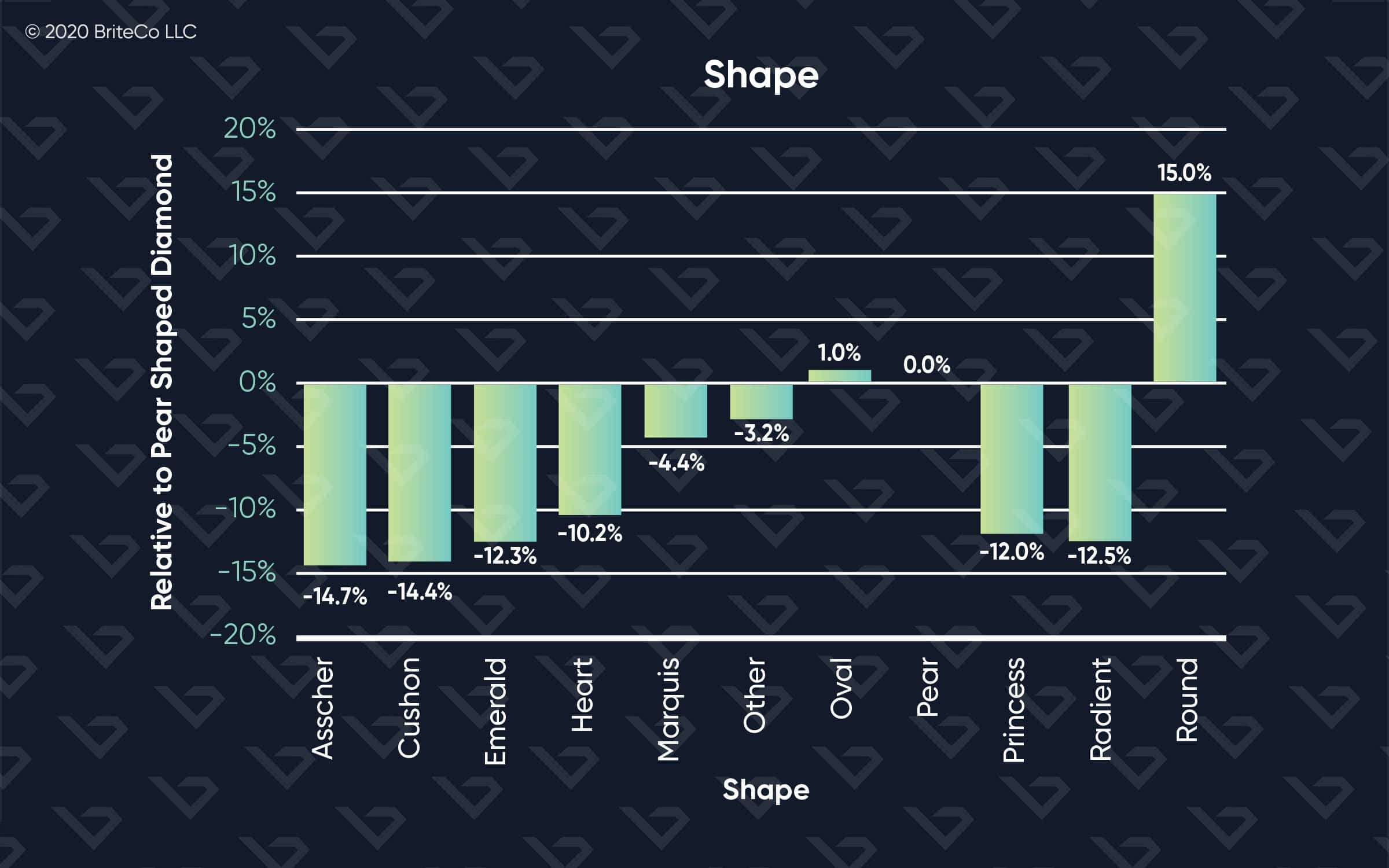
In this graph, we compare prices to the pear shape, which is the standard bearer of the fancy shaped diamonds. In the Shape graph, we can see a significant surcharge for round diamonds. Asscher and cushion cut stones are significantly cheaper than the other fancy shapes.
Shopping Tips:
- For the price-sensitive shopper: Outside of round, pear, oval, and marquise diamonds, there are savings to be had for other fancy shapes.
- For the quality-focused shopper: Round and oval diamonds are the most expensive, but also the most classic and timeless.
What Is The Rarest Type Of Diamond
Exploring Rare Diamond Cuts for Your Engagement Ring
Conclusion
As you can see, when it comes to selecting a diamond, there are all kinds of levers to pull to adjust quality and price. The 4Cs – carat, color, clarity, and cut – are going to make the biggest impact on appearance and value. And guess what? There’s more. Cut quality, fluorescence, grading lab, polish and symmetry are all important factors as well. Visit BriteCo’s free personal engagement ring calculator for a customized report based on your ring preferences. You can learn more about these additional variables in our post Beyond the 4Cs.
Also Check:
Most Expensive Jewelry in the World? | BriteCo Jewelry Insurance
The Most Expensive Diamonds in the World
